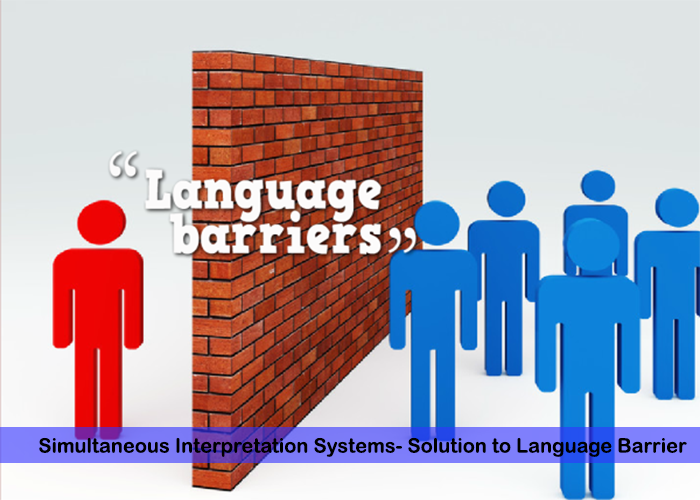For Events/Conferences/ Interpretation Services
- Ram Kesarwani - 9811 200 494
- ram@translationindia.com

SIMULTANEOUS INTERPRETATION EQUIPMENT
In today’s globalized world, the ability to communicate effectively across languages is more important than ever.
However, traditional methods of interpretation, such as consecutive interpretation, can be slow and cumbersome.
Simultaneous interpretation systems, on the other hand, have the potential to revolutionize global communication by providing real-time, accurate translations.
Simultaneous interpretation, also known as conference interpretation, is the process of interpreting spoken language as it is being spoken.
This is in contrast to consecutive interpretation, where the speaker pauses after speaking a few sentences or paragraphs for the interpreter to translate.
Simultaneous interpretation is typically used in settings such as international conferences, meetings, and events where multiple languages are spoken.
Simultaneous interpretation systems typically use a combination of human interpreters and technology. The speaker speaks into a microphone, and their words are transmitted to a soundproof booth where one or more interpreters translate the speech into the desired languages.
The translations are then transmitted via headphones or speakers to the audience. Some systems also use AI-based technology to assist the interpreters or to provide automatic translations.
Simultaneous interpretation allows for real-time, seamless communication between speakers and listeners of different languages. This can greatly improve the efficiency and effectiveness of meetings and events.
Simultaneous interpretation can be more cost-effective than consecutive interpretation, especially for long meetings or events.
Simultaneous interpretation systems can make it possible for people who speak different languages to fully participate in the same event or meeting, fostering greater inclusivity and understanding.
A simultaneous interpretation system typically includes a soundproof booth for the interpreters, microphones and speakers for the speaker and audience, and headphones or other listening devices for the audience. Some systems also use AI-based technology to assist the interpreters or to provide automatic translations.
Yes, with the advent of advanced technology, simultaneous interpretation can be done remotely. Remote simultaneous interpretation (RSI) technology enables interpreters to participate in meetings and events remotely, using internet-based platforms and devices.
The accuracy of simultaneous interpretation can vary depending on the skill of the interpreters and the quality of the technology being used. However, professional interpreters are trained to provide accurate and idiomatic translations, and advances in AI-based technology are also improving the accuracy of automatic translations.
Simultaneous interpretation systems have the potential to revolutionize global communication by breaking down language barriers and fostering greater inclusivity and understanding. With the advent of advanced technology, simultaneous interpretation can be done remotely, making it even more accessible and effective.
To learn more about Translation India, visit www.translationindia.com, or you can call us at 9811200494 or email us at ram@translationindia.com for further information.